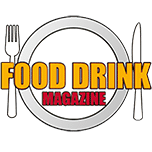Namibia is a country located in the South Western region of Africa. Namibia is known for having some of the highest dunes in the world, located of course, in the Namib and Sahara deserts. The Namib follows along the coast of the country, beside the Atlantic Ocean and is perhaps one of the most striking natural features of the region. Though it has an area of 824 268 km², Namibia only has about 2.5 million inhabitants, making it one of the most sparsely populated countries in the world. Windhoek is its capital city, a well-developed and industrialized center for Namibian businesses and economic investment.
A notable tourist attraction in this city is the Independence Avenue Craft Market, where visitors can expect hand-crafted sculptures, jewelry and clothing. All purchases go towards supporting the local indigenous community, most notably members of the Himba tribe. This tribe is one of Namibia’s most iconic. The women of this tribe are famously known for covering their skin with otjize paste. Which is a mixture of butterfat and ochre pigment. This past helps protect from the hot and dry climate as well as insect bites. The women’s skin appears red after application, giving them their signature look.
Another one of Windhoek’s attractions is the Single Quarters, also known as the Oshetu Community Market. Locals and tourists alike can be found there daily, enjoying a local delicacy known as Kapana. “Kapana” refers to red meat, fat trimmings, liver and kidney which are grilled over a flame and served with chopped onion, tomatoes, chilies and spice. Though kapana is the main attraction, are foods are sold too. “Vetkoek”, a traditional Afrikaaner fried dough bread is often bought alongside kapana, as the foods complement each other. One can also expect to find dried sardines and mopane worms (large green yellow caterpillars found in abundance in Southern Africa.)
The Oshetu Market is a vibrant place, often packed with people and vendors. This makes it one of the best places to touch base with Namibia people and their culture. One can find a variety of local languages being spoken while there. Oshiwambo, being the most prevalent. Oshiwambo Iis spoken by the Ovambo people, the biggest ethnic group in Namibia. English and Afrikaans as well as other indigenous languages are also used to communicate. Most vendors know how to speak English, which makes the experience a lot more convenient for tourists and other English-speaking Namibians.
The Market also has stalls, located towards the back of the complex, where people can purchase clothing, accessories and jewelry. Tradishional Ovambo dresses are a popular product as some vendors are able to sew and tailor dresses to their customer’s specifications. The dresses are a combination of bold pink, red and black stripes, and are often worn by Ovambo women throughout the city. Local woman can also find hair-dress mixed in with the clothing vendors, where they can have their hair braided and decorated in the trendiest African hairstyles. The hairdressers are very skilled and charge far less than the stores located in the central business district. Residents of the Katutura township, are known for visiting them often.
All of this makes The Single Quarters perhaps the most popular place to go in Widhoek. Anyone who finds themselves in the city is encourage to go.




























